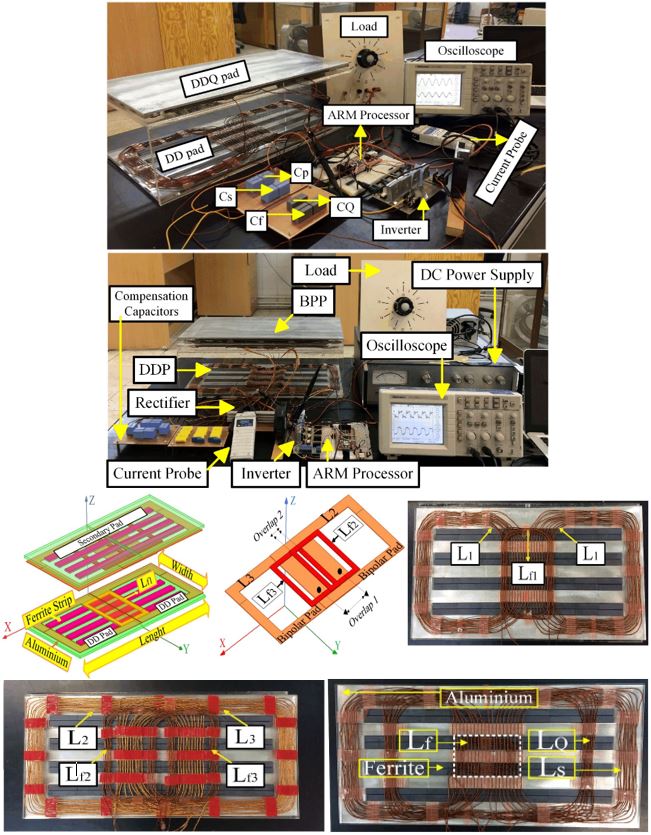
Robust Wireless Power Transfer for EVs by Self-Oscillating Controlled Inverters and Identical Single-Coil Transmitting and Receiving Pads
Researcher: Alireza Eikani
Supervisor: Mojtaba Mirsalim
(2024-2025)
Paper
Inductive wireless power transfer (IWPT) with stable output power and high efficiency is a major challenge for charging electric vehicles (EVs). This paper, for the first time, develops a robust IWPT system using a circular pad (CP) and double-D pad (DDP) with a self-oscillating controlled inverter (SOCI), which offers high steady output power and transfer efficiency under magnetic coupling variations simply with feedback from the transmitter-side current. The compact 2CP and 2DDP magnetic couplers with single identical coils are robust to self- and mutual-inductance variations, so the IWPT system exhibits greater robustness at increased transfer distances (air gaps), as well as in the presence of lateral and rotational misalignments between the two magnetic pads, compared to couplers using nonidentical transmitting primary (TP) and receiving secondary (RS) pads and numerous decoupled coils on the RS pad. Based on a thorough analysis and experimental study, the proposed 1 kW IWPT system with 2CP and 2DDP couplers with up to a 20 cm air gap achieves constant output power with 93% and 92% constant transfer efficiency, respectively. The 2CP with a 15 cm air gap and the 2DDP with a 20 cm air gap, with up to 12 cm lateral misalignment, can tolerate coupling variations.
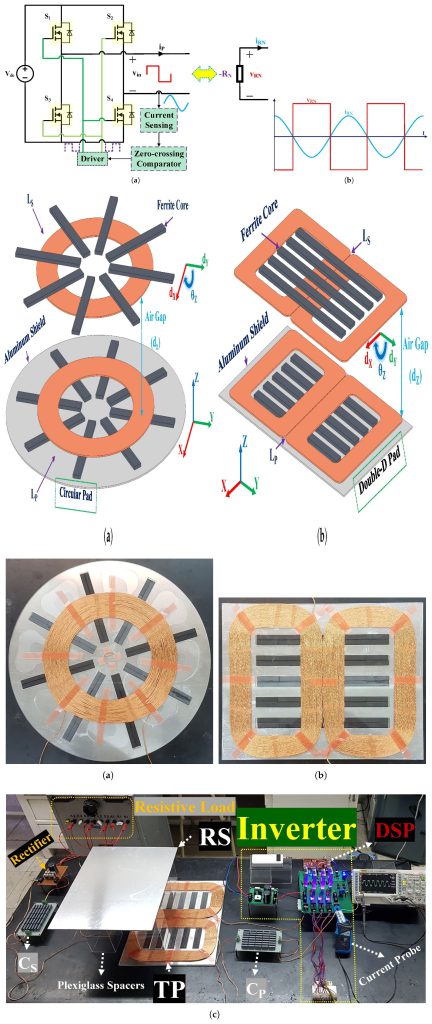
Heat transfer investigations on a thermally superior alternative for the flux switching permanent magnet electric motor
Researcher: Tohid Sharifi
Supervisor: Mojtaba Mirsalim
(2023-2024)
Paper
Severe temperature rise is not tolerated in the windings and permanent magnets (PMs) of the electric motors due to the resultant performance degradation, increased maintenance cost, and eventually the short-circuit faults. This article suggests a new approach to mitigating the temperature of components in a flux-switching PM (FSPM) motor using the concepts of heat transfer paths and heat flow diagrams. Accordingly, changing the location of the armature windings from the adjacency of the PMs to the middle tooth of the E-core stator blocks brings multiple thermal and electromagnetic merits to the proposed motor. In the heat generation stage, the numerical studies indicate that the total power losses of the motor decrease from 56.6 W to 39.6 W. Moreover, the maximum working temperature of the windings and PMs is cut by 36.4% and 40%, respectively, demonstrating the remarkable effect of the proposed strategy on temperature. From the electromagnetic point of view, the proposed motor outperforms the E-core FSPM motor due to the separation of the electrical and magnetic loading sources, resulting in the uniformity of the steel cores’ flux density. Lastly, the thermal and electromagnetic experimental studies are provided to verify the outcomes of the analytical and numerical investigations.
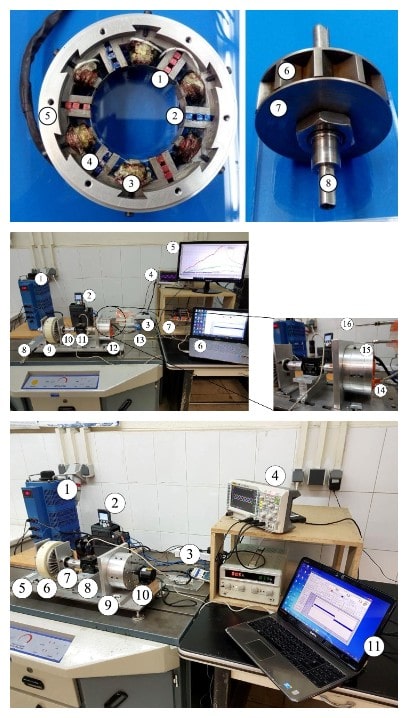
Heat transfer study on a stator-permanent magnet electric motor: A hybrid estimation model for real-time temperature monitoring and predictive maintenance
Researcher: Tohid Sharifi
Supervisor: Mojtaba Mirsalim
(2023-2024)
Paper
When electrical machines operate without a specific cooling system, the surrounding environment plays a crucial role in the rise of temperature and the duty cycle of operation. More clearly, a natural convection cooling system with a low value of heat transfer coefficient carries the risk of thermal breakdown, insufficient safety, and reliability. This paper studies the heat transfer aspects of a low-power flux switching permanent magnet (FSPM) motor under natural convection cooling to implement a novel real-time sensor-less temperature monitoring system. Thermal and electromagnetic experiments are carried out to create foundations for transient and steady-state numerical models. A data-driven, deep learning algorithm estimates the core and permanent magnet (PM) eddy current losses in real-time, besides the already available copper and friction losses. Subsequently, a two-node thermal equivalent circuit in a hybrid model with a feed-forward neural network estimates the dynamic temperature profile of windings and PMs. It is indicated that the worst-case estimation error is below 7.5%, and the configuration is applicable under a wide range of operation states and environmental conditions. Lastly, the system, including the power source, FSPM motor, and hybrid temperature estimation unit, will be implemented in MATLAB/Simulink to investigate the fault prediction and operation management capabilities.

Design and Prototyping of a Mini Hybrid Solar-Wind Plant
Researcher: Mohammad Reza Sarshar
Supervisor: Mojtaba Mirsalim

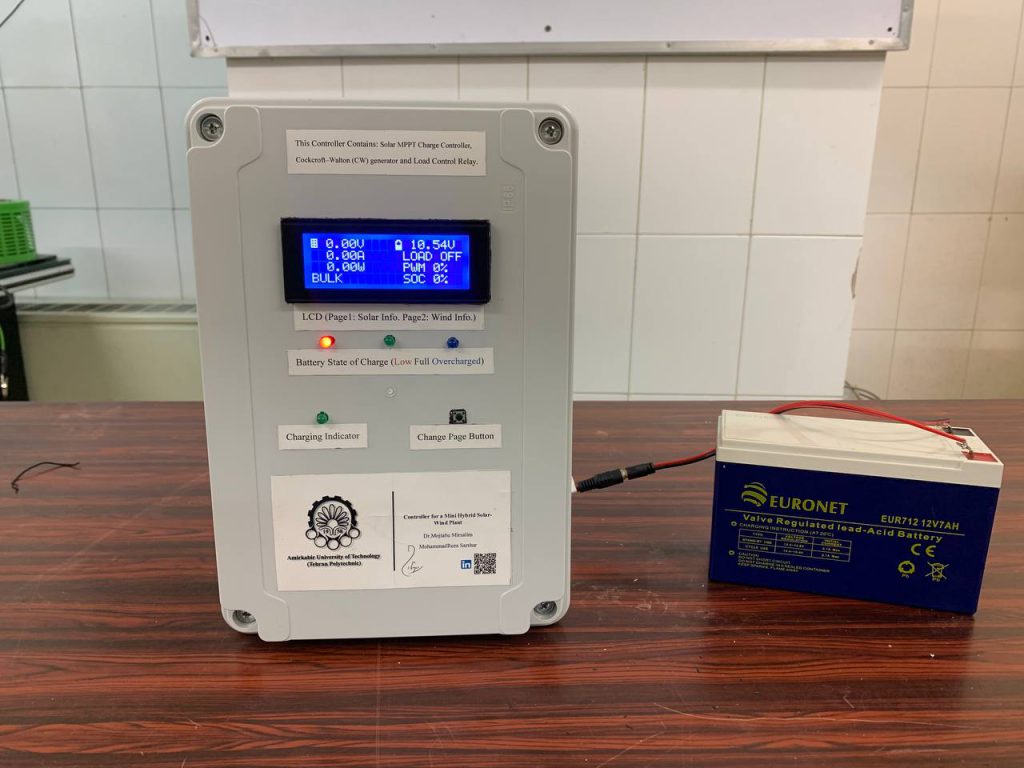
RENEWABLE ENERGY
(2022-2023)
This B.Sc. Thesis abstract: Considering the increasing problems caused by fossil fuels in the production of electrical energy, the use of renewable energy sources, particularly solar and wind energy, is a vital issue. This project describes and builds a small example of a renewable power plant. The sources of electric energy production in this project are solar and wind energy. Additionally, an energy storage source is used, which can be utilized for various applications, including charging mobile phones and lighting. To optimize the use of these energy sources (solar and wind energy to electric energy) and storage source, we use a microcontroller based on ATmega328. This thesis explains three methods (MPPT, PWM, and simple) to control battery charging, and compares MPPT and Switch ON/OFF (simple) methods.
-
Thesis
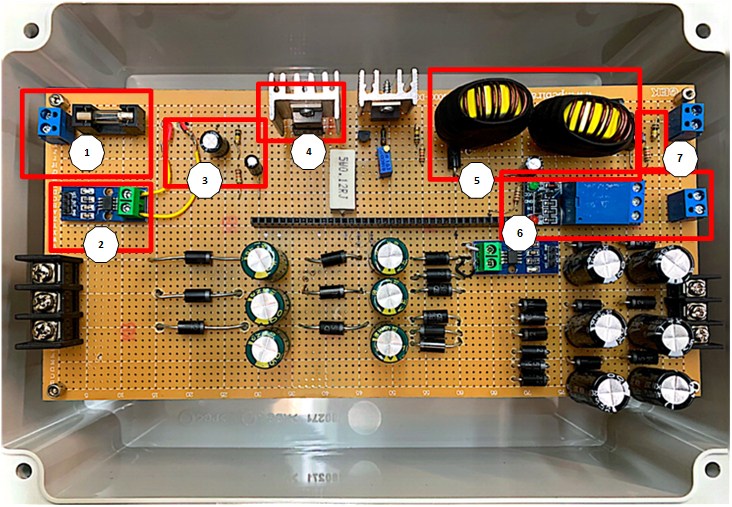
Design, Simulation, Optimization, and Prototyping of an Innovative Switched Reluctance Motor for an In-Wheel EV Application
Researcher: Ehsan Farmahini Farahani
Supervisor: Mojtaba Mirsalim
(2017-2021)
This Ph.D. dissertation considers a comprehensive study on divided-tooth permanent-magnet-assisted outer-rotor switched reluctance motors (SRMs). Foremost, it looks into the impact of the number of teeth per stator pole. The compared structures’ average and maximum torque profiles are obtained using finite element simulations. It is shown that as the number of teeth increases, higher torque is obtained. Then, six small PMs are inserted inside the teeth of neighboring modules to form a new hybrid reluctance motor (HRM). Based on the motor’s equivalent magnetic circuit (MEC), it is proven that the PMs contribute to increasing the air-gap flux density and regulating the stator poles’ flux density. As a result, the motor’s output torque is also increased. The four permanent-magnet-assisted SRMs are compared in terms of the average and maximum torques using finite element simulations. Based on the comparison results, the 48/50 HRM is selected as the best candidate among all compared SRMs and HRMs. The magnetic flux density distributions, static torque, and flux linkage characteristics of the proposed HRM are obtained. Moreover, the cogging torque profile of the motor is obtained, which approximates zero. Next, the steady-state performances of the proposed HRM are obtained under low and high operating speeds. Finally, a prototype of the machine is constructed, and the test results are obtained and compared with the simulations, showing a good agreement between these results.
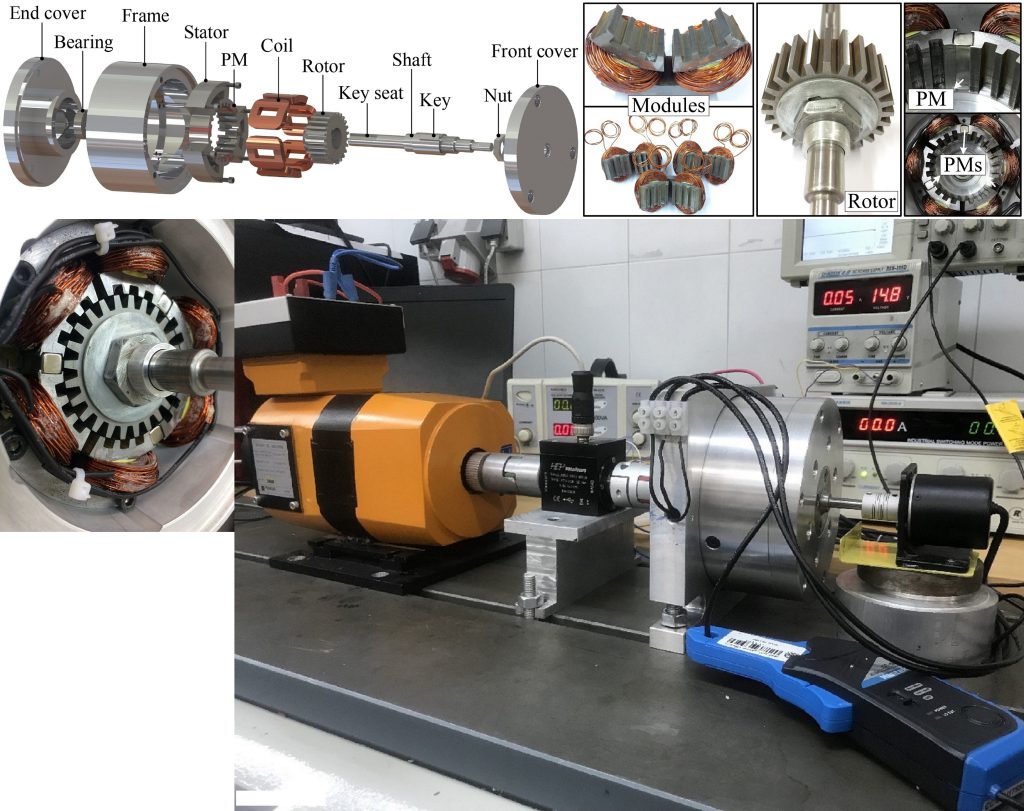
Transformer Rectifier Unit Design, Simulation, and Prototyping with a Flat Power-Efficiency Curve in a Wide Range of Output Power
Researcher: Shokoufeh Valadkhani
Supervisor: Mojtaba Mirsalim
(2019-2020)
Corrosion has a huge economic and environmental impact on virtually all facets of the world’s infrastructure, from highways, bridges, and buildings, to oil and gas, chemical processing, and water and waste-water systems. Cathodic protection (CP) is the electrical solution to the corrosion problem. The protection from corrosion of buried pipelines used to transport gas and oil is ensured by an insulation coating and cathodic protection. To slow down the corrosion process in many oil-production companies, the oil, gas, and water pipelines are protected by injecting the DC current into the pipelines. The principle of CP is to make the potential of the whole surface of the steel structure sufficiently negative with respect to the surrounding environment to ensure that no current flows from the metal into the medium. This can be done by forcing an electric current to flow through the electrolyte (i.e., soil or sea water) towards the surface of the metal to be protected. The CP converter should be suitable for installation in a non-air-conditioned room with restricted ventilation or in an outdoor kiosk in locations having corrosive, warm, humid, and dusty atmospheres. CP rectifiers are the external power sources used in CP systems to convert AC to variable DC output voltage. This thesis proposes a transformer rectifier unit (TRU) for CP, mostly to enhance the efficiency in low to medium output voltages, where the duty cycle is less than 30%. This device is composed of two parts, an AC/DC converter and a DC/DC variable frequency full-bridge converter. The AC/DC converter is a switch-mode boost power factor correction (PFC) converter with an emphasis on high efficiency, thus resulting in an almost unity power factor and fixed DC output voltage. The DC/DC full-bridge variable frequency converter operates under pulse-width-modulation (PWM) with a variable frequency control method responding to user output voltage demand. To guarantee the operation of the converter in a sealed box and high ambient temperature for industrial applications, the drive circuitry is designed with discrete components, and losses due to transformer, capacitors, inductors, switches, and diodes are minimized. A prototype is implemented and tested to verify the nearly flat high efficiency of the converter in a wide operating range of output voltages.
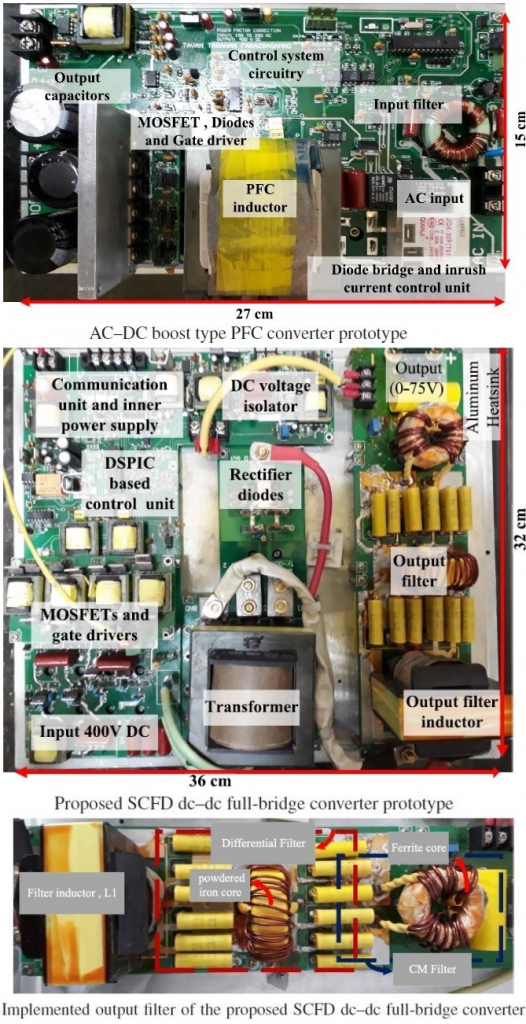
Design, Simulation, and Prototyping of an Improved Linear Switched Reluctance Motor
Researcher: Matin Vatani
Supervisor: Mojtaba Mirsalim
(2019-2020)
Linear switched reluctance motors (LSRMs) are a viable candidate for traction system applications, in that they enjoy the light-weight translator and low manufacturing cost. This thesis deals with introducing a novel high-thrust density modular primary linear switched reluctance motor (MPLSRM). The proposed structure improves the LSRMs characteristics, including flux linkage, average thrust, output power, and efficiency compared to conventional LSRMs. An extensive literature review based on determining the application requirements, studying the LSRMs topologies, and investigating innovative methods of rotary SRMs (RSRMs) is performed. This classified study assists in finding the required specifications of the LSRM, which is used in traction systems. According to these, methods that impact on fulfilling requirements are compiled from LSRMs and RSRMs papers as well as references. Using the extracted methods, a new LSRM topology, the MPLSRM, is offered, and its operating principles are discussed. In the following, the standard design procedure of the LSRMs is combined with finite element method (FEM) sensitivity analysis to obtain the main parameters and dimensions of the proposed motor. The designed motor, utilizing two-dimensional (2-D) finite element analysis (FEA), is simulated, and its static magnetic characteristics and dynamic performances are achieved. Finally, the proposed MPLSRM, concerning mechanical consideration, is manufactured and tested in the laboratory. Additionally, an asymmetric half-bridge converter is needed to drive the LSRMs. Hence, a converter with real models of converter components is simulated and linked to FEA simulations to evaluate motor performances under real excitation conditions. Then, a converter is built, and the motor along with linear encoder, current sensors, and a microprocessor is driven. The comprehensive investigation of the proposed motor’s counterparts indicates the outperformance of the MPLSRM compared to them. Moreover, the experimental outcomes verify the satisfactory agreement with those issued from the simulations. Both simulation and experimental results are indicative of the MPLSRM’s capability for use in traction system applications.

Design, Simulation, and Prototyping of an Improved Wireless Power Transfer for Electrical Vehicles
Researcher: Behnam Mohammadian Mosammam
Supervisor: Mojtaba Mirsalim
(2019-2020)
According to a report by World Bank, there are more than 17 million vehicular trips per day in Tehran, and many of the vehicles have outdated technology. Thus, the air in Tehran is among the most polluted in the world. In fact, there are some obstacles to encourage people to use Electric Vehicles (EVs), such as the annoyance of high-voltage cables. Thus, Wireless power transfer (WPT) using magnetic resonance is the technology which could set human free from the annoying wires. In fact, the WPT adopts the same basic theory which has already been developed for at least 40 years with the term inductive power transfer (IPT). WPT technology is developing rapidly in recent years. The advances make the WPT very attractive to the electric vehicle (EV) charging applications in both stationary and dynamic charging scenarios. By introducing WPT in EVs, the obstacles of charging time, range and cost can be easily mitigated. Battery technology is no longer relevant in the mass market penetration of EVs. In this thesis, a new integrated tripolar pad using double-sided LCC compensation is proposed and then based on the circuit characteristic, which is analyzed in detail, the introduced system is simulated and investigated. The tripolar pad utilizes three decoupled coils and shows a promising tolerance against rotational displacements and consequently provides a convenience for the user to park the vehicle. Due to compensator coils, the double-sided method of compensation is more massive than the other methods. Here, the authors offer a scheme to make the wireless power transfer system more compact by integrating the compensation inductors with the main couplers. In order to locate the best place to embed the compensator coils, the flux density between the couplers is analyzed. Additionally, it is shown that since the pad is composed of multiple coils, there are some undesired mutual inductances that should be designed for the least possible values. The behaviors of the proposed pad are analyzed and thoroughly discussed based on four different displacements. In order to validate the theoretical results, a 500W wireless power transfer is fabricated and tested at 85kHz for the proposed double-sided LCC compensation. The simulation and experimental results show the performance of the proposed structure. It is hoped that this research (thesis), and push forward the further development of WPT as well as the expansion of EV.
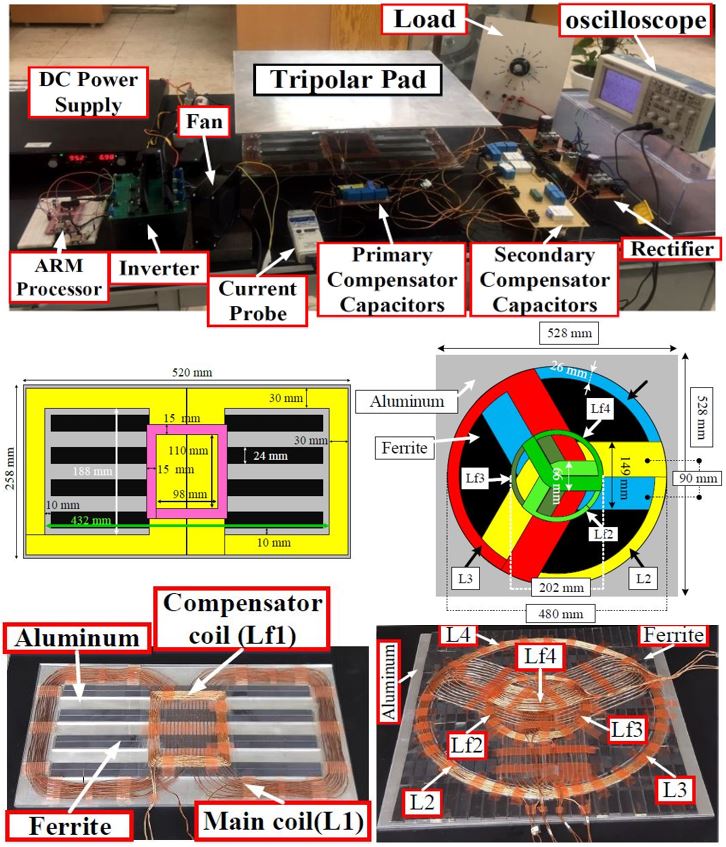
Simulation and Manufacturing of a New Doubly-Salient Permanent Magnet Synchronous Motor with New Methods of PM Insertion
Researcher: Mohammad Amin Jalali Kondelaji
Supervisor: Mojtaba Mirsalim
(2019-2020)
The aim of this project is to apply permanent magnets inside the stator structure of doubly-salient motors using new configurations in order to enhance its torque and power densities.
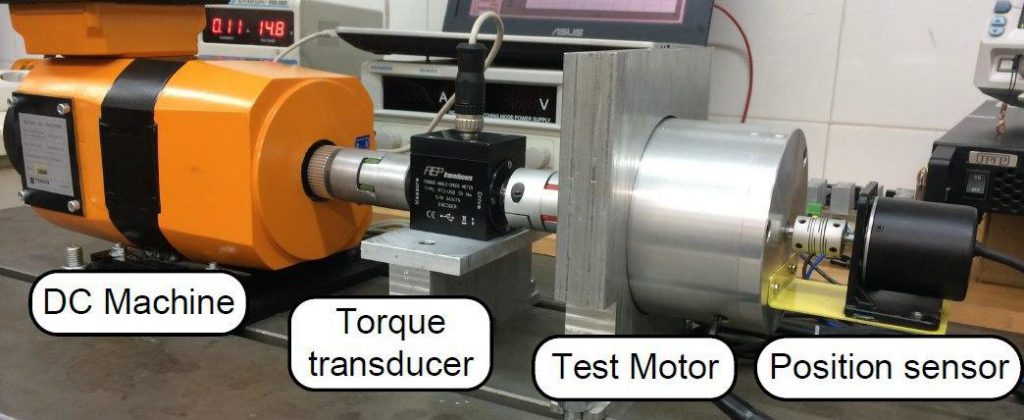
Design and Fabrication of a Novel Exterior-Rotor Multiple Teeth Hybrid-Excited Switched Reluctance Motor for Electric Bicycle Application
Researcher: Mohammad Amin Jalali Kondelaji
Supervisor: Mojtaba Mirsalim
(2018-2019)
In this project, a new exterior-rotor multiple teeth switched reluctance motor is proposed, which exploits permanent magnets inside the end teeth of the neighboring stator poles. First, the topology of the proposed motor, namely PM-SRM, is introduced and its working principle is illustrated. Then, based on the magnetic equivalent circuit (MEC) of the motor, it is proven that the PMs contribute to increase the air-gap flux density and regulate the stator poles flux density. As a result, the output torque of the motor is increased as well. The electromagnetic analyses of the proposed PM-SRM are performed using 3-D finite element analysis. To validate the improved performance of the proposed PM-SRM, it is compared with its PMless counterpart and a classical 12/10-pole SRM in terms of the output torque and power, losses, and efficiency. It is shown that the proposed motor outperforms the two compared motors in terms of the output power and torque, and efficiency. Finally, a prototype of the motor is fabricated and tested to evaluate the predicted results. Both simulation and experimental results demonstrate the high torque and power production capability of the proposed PM-SRM.
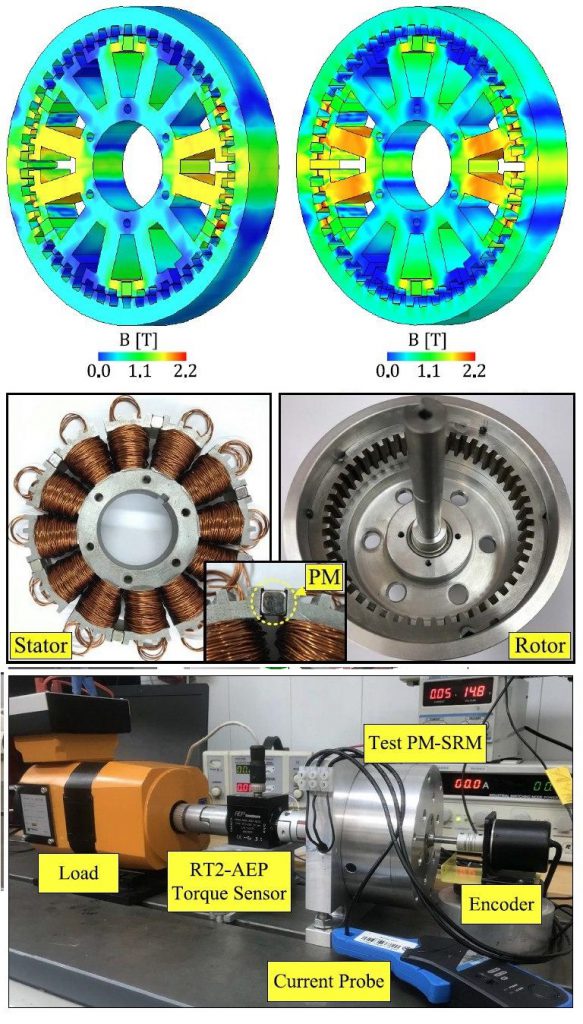
Modeling, Design, and Prototyping of Four Novel Multi-Tooth Hybrid and Switched Reluctance Motors for High-Torque Applications
Researcher: Mohammad Amin Jalali Kondelaji
Supervisor: Mojtaba Mirsalim
(2018-2019)
In this project, a new multi-tooth switched reluctance motor (MT-SRM) is proposed and then based on the original topology, three novel multi-tooth hybrid reluctance motors (MTHRMs) are introduced to improve the torque characteristics of the SRM. The proposed structures are an MT-HRM with permanent magnets (PMs) between the side teeth of the adjacent modules, an MT-HRM with PMs in the yoke, and finally an MT-HRM with dual-PM configuration. The operating principles of the MT-HRMs are illustrated and the flux adjusting effect and outstanding torque production ability of the PMs are demonstrated through the theoretical and simulation results. The flux distributions and static torque and flux linkage profiles of the motors are obtained and compared. The four proposed motors are compared in terms of the steady-state current and torque waveforms. All the simulation results indicate that the PM assisted structures can achieve higher torque and power than their PMless counterpart with deploying only three/six small PMs. The four motors are prototyped and the experimental results are carried out. Both the experimental and simulation results prove the effectiveness of the proposed MT-HRMs.

Modeling, Design, and Prototyping a Novel Double-Stator Segmented-Rotor Switched Reluctance Motor for EV Applications
Researcher: Mohammad Amin Jalali Kondelaji
Supervisor: Mojtaba Mirsalim
(2018-2019)
This project delves into simultaneously applying the modular stator and segmented rotor to switched reluctance motors (SRMs). In this regard, a new double-stator segmented rotor modular SRM (DSSR-MSRM) with a new pole combination is proposed. First, the motor topology is introduced and the magnetic circuit model of the motor is analyzed. Next, the electromagnetic performances of the machine are analyzed using a finite-element analysis (FEA). The superiority of the DSSR-MSRM in terms of flux linkage and torque is illustrated based on a comparative study with five various types of SRMs with modular/non-modular and segmented/non-segmented structures with the same dimensions and parameters. The simulation results indicate that the DSSR-MSRM has higher torque compared to the other structures. Moreover, the dynamic performances of the proposed motor are obtained. In addition, it is shown that the proposed motor has low torque ripple. Finally, the prototyped motor is built, the mechanical considerations are investigated, and the experimental results are obtained, which are in a good agreement with those predicted from the FEA.
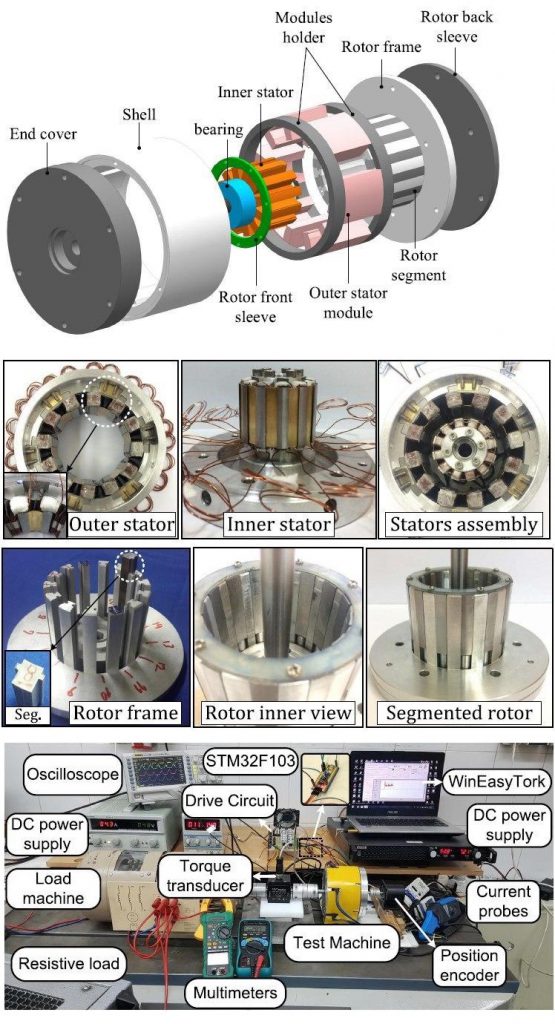
Design and Prototyping of a Wireless Power Transfer for Electric Vehicles
Researcher: Navid Rasekh
Supervisor: Mojtaba Mirsalim
(2017-2018)
Nowadays, inductive power transfer is of great interest for system working with an electric power due to its safety, reliability and convenient characteristics. In fact, efficiency and compactness are the two parameters which play an important role in recharging electric vehicles. Double‐D Quadrature Pad (DDQP) is a suitable pad structure that due to the utilizing an additional coil, can enhance the X‐axis tolerance. Although there are several compensation methods to boost the efficiency, series and LCC compensation types seems to be more practical and optimal. In this work, LCC and series compensations are used together in the DDQ pad as receiver‐side and calculated the value of the primary capacitor for enhancing the efficiency. Moreover, it is shown that in the misaligned position which compensation has a better performance utilizing the quadrature coil. Also, it is demonstrated that for make a system more compact, a quadrature and compensated coils integrated with the main coil in the secondary‐side does not have any significant effect on each other and on the other coils. Finally, DDP transmitter and DDQP receiver with integrated LCC compensation method is prototyped to verify the results. A Bipolar Pad (BPP) is the newcomer magnetic structure of inductive power transfer (IPT). This pad has the best performance in the lateral misalignment contrasted with the other single sided pads such as Double-D Pad (DDP). Also, it has less amount of copper compared to the Double-D Quadrature Pad (DDQP). Doublesided LCC compensation topology is the efficient way to compensate the IPT than the other compensation types. However, due to the utilization of compensation inductances, its volume is larger than the other formats. Thus, to have a compact compensation method, these inductances are integrated to the main coils, considering the effects of the coils on each other. In this work, for the first time, compensation of a Bipolar Pad with novel integrated inductances of the LCC compensation method is introduced. This integration is analyzed and its effects are optimized to an insignificant rate with 3D finite element analysis (FEA) tool ANSYS MAXWELL. Also, the primary compensation is changed to a series method to decrease the number of compensation components, and assessing the effects of this variation on the circuit. Eventually, DDP transmitter and BPP receiver with integrated Double-sided LCC compensation topology is prototyped to verify the analytical results.
